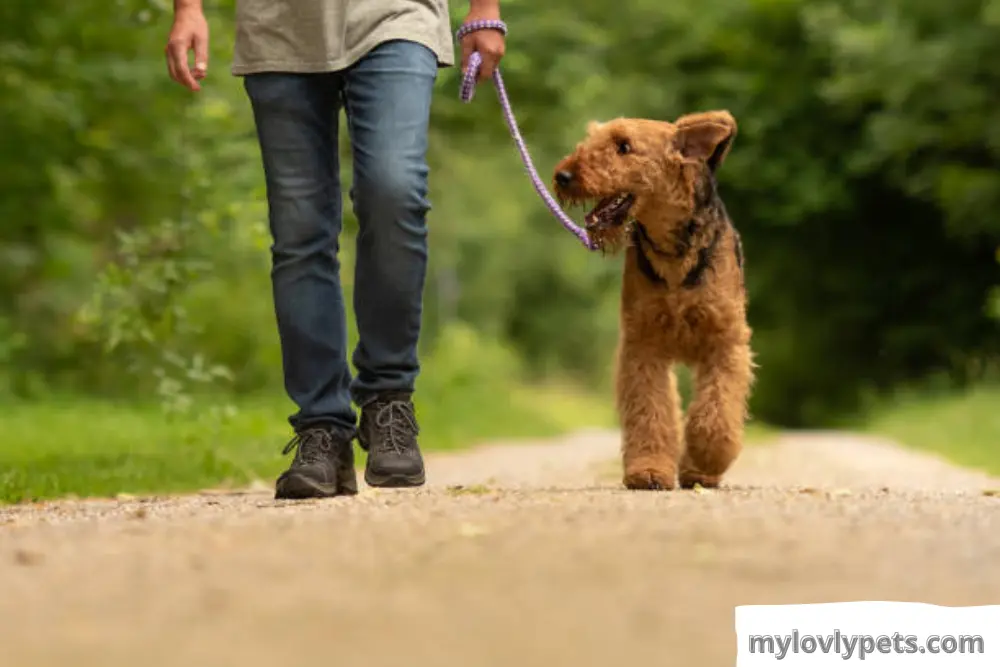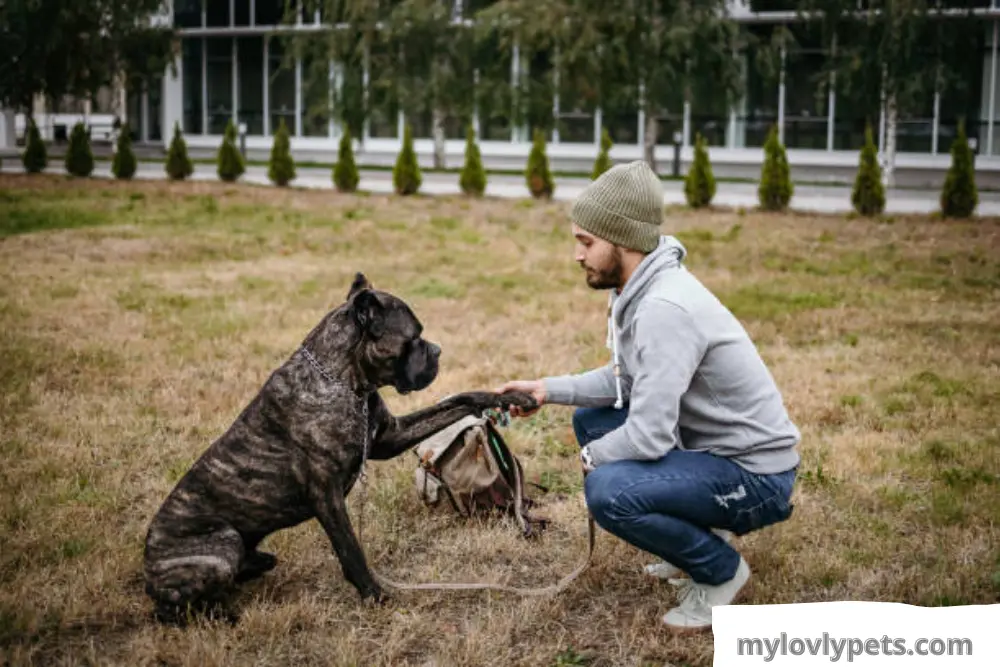How To Leash Train A Puppy In 5 Simple Steps

Leash-pulling is one of the most prevalent complaints among dog owners. An ideal stroll with your dog involves no yanks, no leash tangles with passers- By’s legs, and no tug-of-war on the pavement. As annoying as this behavior might be, keep in mind that walks are usually the most exciting moments of the day for a dog. Since they are curious by nature, it might be challenging to know how to leash train a puppy and how to restrain their curiosity about new sights, sounds, and people. So, if your dog is always yanking on the leash, read on for some solutions.
When to Start Leash Training a Puppy
You don’t have to wait long to begin leash training your new dog. When a dog is mature enough to join a new family, she often gets a trial run at some of her new experiences, including learning to walk on a leash and harness. dog trainers, advise new dog owners not to take their pets for walks on day one, but rather to go right into training.
Training can be more difficult initially because of your puppy’s young age, but even just a few simple rules will make a big difference. Training sessions should be kept brief to keep your dog interested and focused. Depending on the dog and even the day, a walk of 5 to 15 minutes is good for leash training a puppy.
Younger puppies can’t go outside until they’ve had all their vaccines. However, it is recommended to get your new best buddy used to wearing a collar, harness, and leash before then.
While your pet is wearing her harness, keep her busy and pleased. Don’t overdo it, too – stress will just make future tries more challenging, and you may always try again later.
What is Balanced Dog Training? What Is Right And Wrong
How Long Does It Take to Leash Train a Puppy?

Your puppy could pick up the proper manners for walking on a leash in around 4-6 weeks if you start leash training early. The speed with which your dog learns, however, will depend heavily on your commitment to the training.
Learning might be more challenging for adult dogs, especially if they have negative behaviors like leash pulling that need to be undone. But keep trying; even the most obstinate dogs may be leash-trained with enough praise and yummy snacks.
How to Leash Train a Puppy in 6 Simple Steps
A leash can be introduced after your dog has been wearing a harness for about a week or more.
Step 1: Get started in a confined, quiet indoor area. You should practice this training inside, in a calm space. When first beginning to teach a dog to walk on a leash, it’s best to do so in a contained location where there aren’t a lot of interesting distractions.
Step 2: Allow your puppy to sniff the leash before clipping it on. You can use positive reinforcement by giving them a treat when they agree to have you attach the clip.
Step 3: Time to start training your dog to remain by your side. Just take a baby step and pause to watch the puppy. Start by praising your puppy and feeding it a treat at head level next to your leg as soon as it takes even a small step in your direction.
Step 4: It is recommended to teach your pup a “come” phrase or sound before you take it on its first walk. Make the sound (with a clicker or your voice) and praise your dog when he looks in your direction.
Step 5: When your dog has learned to follow you in one direction, it’s time to provide some variation. You should keep guiding your dog in different directions while rewarding it with treats. If you started by moving forward, try backward or sideways—all the ways you might walk. Always reward your dog when they follow your lead.
Do this for a few minutes every day until your dog reliably follows you.

Pro Tip: Practice makes perfect, so practice is compulsory! You can teach your dog a cue word to follow you before going outdoors by doing this daily and gradually increasing the distance he walks to collect the treat. This will help if he gets distracted.
Essentials of Training
The right tools are essential for learning how to leash-train a dog. Here is a list of what you will need:
A Collar or Harness
Without a suitable collar, you can’t begin loose-leash training your dog. You have a lot of options when it comes to leash training collars. Even so, choke, prong, and shock collars should be avoided because of the harm they do and the cruelty they exhibit. There’s no need for your pet to endure pain.
Harnesses are an excellent substitute for collars. For dogs accustomed to yanking on leashes, it’s also safer.
Leash
One cannot recommend a single, ideal leash for teaching a dog. Choose a lightweight one for a toy poodle or a sturdy one for a puppy with a strong chewing jaw.
A retractable leash is not what you need for leash training. These are ideal for dogs who have learned to walk properly on a leash.
Treats
Dog training relies heavily on the use of positive reinforcement. Instead of punishing bad behavior, desirable behavior is rewarded with food and praise. It’s been scientifically demonstrated to be the best method for training your puppy.
So, using tasty treats is the greatest method for leash training a dog. Also, it makes sense to let your dog choose them out. Visit the pet store with your dog to sample treats and buy the ones he liked best.
Positivity and Persistence
The most frustrating part of training your dog is when they yank on the leash or walks in between your feet. Your dog will make mistakes the first few times. It’s not impossible, despite how frustrating it can be. Enjoy your time with your best buddy and prepare yourself with lots of patience and positivity.
Why Does My Dog Pull on The Leash?

Daily walks are a crucial aspect of your dog’s health and well-being. The first step in learning how to walk a dog properly is figuring out why your dog is acting up. Always remember that your dog has their own motivations for how they act. If you can identify the cause of your dog’s undesirable behavior—be it excessive barking, yanking on the leash, or defecating or urinating on your carpets—you may begin to alter the cycle.
Also read: Why Your Dog Barking at People / Possible Reasons and Best Advice
It Serves Them
Dogs can get where they’re going more quickly by pulling than by keeping up with your pace.
Also, this is a normal thing for dogs to do. Trapped dogs pull to escape in the wild. This is why some dogs are raised specifically to pull sleds. However, training a dog to walk nicely on a long leash is not easy and calls for a significant time commitment.
Eagerness
Imagine that you have been at home all day and it is now time to leave and I n the park, you’ll see all of your buddies. Further, your second-most-favored individual will also be present. I would want to move as quickly as I could. In their eagerness, it’s understandable if our puppies pull on their leashes.
Response
Drama queen dogs are hard to walk on leashes. These dogs overreact to things that shouldn’t be a problem. It may be the wind, the birds, or the youngsters playing nearby.
Aggression can develop out of reactivity if it is ignored for too long. If your dog exhibits such behavior, it’s best to consult an expert.
Anxiety or Panic
It’s normal for an older dog that wasn’t leash trained as a puppy to show signs of anxiety or fear when introduced to the leash. Dogs that are older have a tougher time picking things up. They may find it inconvenient to adopt anything novel.
If this is the case, you may want to ease up on the training and consider getting your dog some relaxing remedies.
Also read: 12 Signs of a Confident Dog/ Understanding Insecure Dog Body Language
Final Thought: How To Leash Train A Puppy
It’s not as simple as it looks to learn how to properly leash train a dog. It requires hard work and a lot of rewards. However, learning to walk well on a leash is a crucial step toward raising a happy and healthy puppy. Daily walks with your pet prevent several age-related neurological illnesses.
Leash training a puppy—or any dog—takes time! However, it is a rewarding and beneficial practice that you should begin as soon as your new pet arrives.
In no time at all, your dog’s manners will be the talk of the neighborhood, and you’ll be pleased you made the effort now. Happy Pet Parenting!


